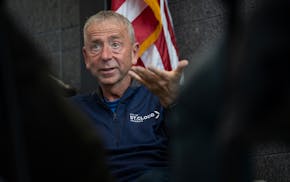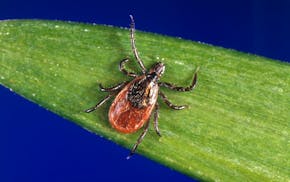In hot spots around America, it's become clear that African-Americans are disproportionately contracting and dying from the deadly coronavirus. For every 100,000 black Americans, about 23 have died from COVID-19, a mortality rate more than double that of whites and other groups, according to the independent APM research group.
And in six states and Washington, D.C., black mortality rates are even higher, most dramatically in New York state where the rate has been nearly four times greater.
In Minnesota, blacks comprise about 7% of the state's population and so far make up about 13% of confirmed cases, although only 3% of deaths. Hispanics comprise 6% of cases and 3% of fatalities, according to state figures. Health experts expect the local minority numbers to rise and more closely mirror the disparities in other states.
Health officials believe the real numbers in Minnesota's minority communities are likely higher because the state doesn't have race or ethnicity data for about 20% of documented cases. In addition, much of the testing up to this point has been done in areas or facilities that are mostly white.
Setting aside Minnesota's situation, the stark national differences are disturbing but not surprising. They are yet another product of America's well-documented economic "gaps," which can be seen in everything from education to income to housing. In many areas, Minnesota is known to have even wider disparities than many states.
Health is also on that list. That's why it's critical to collect accurate demographic data and to use it to target testing and other COVID-fighting efforts to lower-income black communities.
Like those in congregate homes for the elderly and homeless shelters, blacks are more likely to have underlying health problems that are associated with the worst COVID-19 outcomes — conditions including diabetes, high blood pressure and asthma. Disproportionate levels of poverty and other barriers mean less access to nutritious food and regular health care.
Similar poverty, health and access issues threaten to put Latinos and Native Americans at greater risk for COVID-19 complications. Another contributing factor explaining higher case numbers is that large numbers of people of color work in lower-paying, customer-facing service jobs that can't be done from home.
During last week's COVID-19 updates, Minnesota officials acknowledged that "existing racial and economic inequities have been exacerbated" by the coronavirus and that they will work toward "long-term protection" of at-risk populations. The announcement last week that Minnesota is working toward testing 20,000 people per day will help.
"This expanded testing capacity will be transformative to our COVID-19 response, especially for vulnerable populations: individuals living in congregate care settings or experiencing homelessness; communities of color and American Indians; and critical workers," Lt. Gov. Peggy Flanagan said.
Like Hurricane Katrina, the coronavirus pandemic has laid bare America's deep differences in illness and death by race, ethnicity and income. And the devastating statistics should fuel a national resolve to finally address these unacceptable inequities.

Kudos to St. Cloud's longtime mayor
Readers Write: Ethnic studies curriculum, public notice laws, student protests

